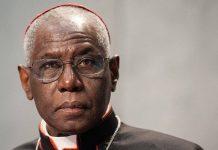Saint Augustine, Florida, USA (Wednesday, 09-16-2015, Gaudium Press) Cardinal Sean O’Malley, from Boston, writes in his blog that: This week was the celebration of the 450th anniversary of St. Augustine, Florida, which is the oldest continuously occupied European settlement in the United States, and I was honored to be appointed as the Papal Legate, which is the representative of Pope Francis, to the celebration.
Don Pedro Menéndez de Avilés led the Spanish ashore at St. Augustine on the Feast of the Nativity of Mary, Sept. 8, in 1565 and their chaplain, Father Francisco López de Mendoza Grajales, celebrated the first Mass there the same day.
So, on Tuesday, we had a Mass to celebrate the anniversary on the very Feast of the Nativity of Mary.
In my homily I mentioned that the mythical fountain of youth that Ponce de Leon was looking for is supposed to have been located in St. Augustine. I said that now we can understand why so many senior citizens come to Florida!
In the morning, before the Mass, there was a reenactment at the very site where the Spaniards would have landed.
It was quite grand, with people dressed as settlers and soldiers who rowed to shore in boats, replicas of the kind of “chalupas” they would have used.
They even had a priest representing Father Francisco carrying a cross. Part of the ceremony showed Don Pedro venerating the cross, claiming the land “en el Nombre de Dios, y el Rey de España.”
There were quite a number of special guests for the event, including the Spanish ambassador and the Spanish consul as well as a direct descendent of Don Pedro Menéndez de Avilés. This week, King Felipe and Queen Letizia of Spain also paid a visit to St. Augustine.
As you might imagine, St. Augustine has a very long and interesting history, filled with a long list of “firsts”: the first permanent parish church in United States (now the Cathedral Basilica of St. Augustine), the first free school in United States (which was a Catholic school), the first baptism in United States, the first seminary … and the list could go on.
During our visit, we got to experience a little bit of that rich history.
I was somewhat surprised to see the flags and colors of Spain flying throughout the city, but I was reminded that it was a Spanish possession for over 300 years – longer than it has been part of the United States.
When they celebrated the 400th anniversary 50 years ago, they set up a huge cross which they call the Beacon of the Faith.
When St. Augustine was established, it was part of the Diocese of Santiago de Cuba, but soon the Spanish Crown sent Irish priests to work there. For example, among the first priests in the settlement was Father Ricardo Arturo (Richard Arthur).
At first blush, it may seem odd that they sent Irish priests to a Spanish colony, but these were Irish priests who spoke Spanish, because the Irish College was in Salamanca, Spain because they couldn’t train priests in Ireland and so they were sent to the continent to study.
Another famous Irish priest of St. Augustine was Father Miguel O’Reilly, who became a mentor for Servant of God Felix Varela.
Varela was the grandson of the commander of the Spanish military in Florida and was trained by the Irish priests in St. Augustine. As a young man, with the guidance of Father O’Reilly, he eventually chose to study for the priesthood rather than pursue a military career.
He entered the seminary in Havana and was ordained to the priesthood there. He was quite an intellectual and patriot, and was elected to represent Cuba in the Spanish Parliament. But, because of his strong advocacy for Cuban independence, he was eventually condemned and forced to flee for his life.
He went to New York, where he became the Vicar General and did a great deal of work with the Irish immigrants. So devoted was he that he even learned how to speak Irish.
He retired to St. Augustine, where he died a few years later. He was eventually reinterred at the University of Havana and Pope John Paul II visited his grave there and honored him during his visit to Cuba in 1998.
Source: Cardinal Sean’s Blog



































